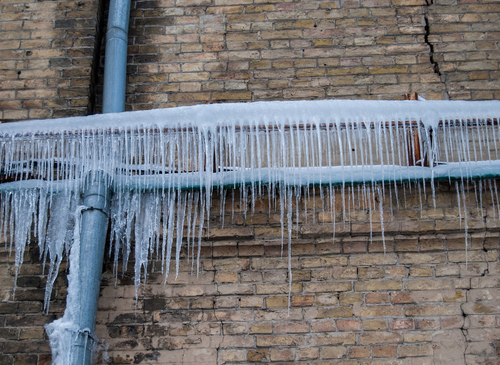Key Approaches for Preventing Frozen Plumbing in Winter
Key Approaches for Preventing Frozen Plumbing in Winter
Blog Article
Presented here underneath you will discover additional wonderful answers on the subject of How to prepare your home plumbing for winter weather.

Cold weather can ruin your plumbing, especially by freezing pipes. Below's just how to prevent it from occurring and what to do if it does.
Intro
As temperature levels decrease, the risk of frozen pipelines rises, possibly leading to pricey repairs and water damages. Recognizing exactly how to stop frozen pipelines is vital for property owners in cool climates.
Recognizing Icy Pipelines
What creates pipes to ice up?
Pipelines freeze when exposed to temperatures listed below 32 ° F (0 ° C) for prolonged durations. As water inside the pipelines freezes, it broadens, taxing the pipeline wall surfaces and potentially triggering them to break.
Dangers and problems
Icy pipes can cause water disruptions, building damage, and costly repair work. Burst pipes can flooding homes and create extensive architectural damages.
Indicators of Frozen Water Lines
Identifying frozen pipes early can avoid them from breaking.
How to determine icy pipes
Search for lowered water flow from faucets, uncommon odors or noises from pipelines, and visible frost on revealed pipelines.
Prevention Tips
Shielding at risk pipes
Wrap pipelines in insulation sleeves or use warmth tape to protect them from freezing temperature levels. Concentrate on pipelines in unheated or outside areas of the home.
Heating techniques
Keep interior rooms sufficiently heated, especially areas with plumbing. Open up closet doors to permit warm air to circulate around pipelines under sinks.
Shielding Outside Pipes
Yard hose pipes and exterior faucets
Separate and drain garden pipes before wintertime. Mount frost-proof spigots or cover outside taps with shielded caps.
What to Do If Your Pipelines Freeze
Immediate activities to take
If you suspect frozen pipes, keep faucets open to ease pressure as the ice melts. Utilize a hairdryer or towels taken in warm water to thaw pipelines slowly.
Long-Term Solutions
Structural modifications
Consider rerouting pipes away from outside walls or unheated areas. Include extra insulation to attic rooms, basements, and crawl spaces.
Upgrading insulation
Purchase premium insulation for pipes, attic rooms, and walls. Appropriate insulation aids preserve regular temperature levels and decreases the danger of frozen pipes.
Conclusion
Protecting against frozen pipelines needs proactive steps and fast feedbacks. By recognizing the reasons, indications, and safety nets, home owners can shield their pipes during cold weather.
5 Ways to Prevent Frozen Pipes
Drain Outdoor Faucets and Disconnect Hoses
First, close the shut-off valve that controls the flow of water in the pipe to your outdoor faucet. Then, head outside to disconnect and drain your hose and open the outdoor faucet to allow the water to completely drain out of the line. Turn off the faucet when done. Finally, head back to the shut-off valve and drain the remaining water inside the pipe into a bucket or container. Additionally, if you have a home irrigation system, you should consider hiring an expert to clear the system of water each year.
Insulate Pipes
One of the best and most cost-effective methods for preventing frozen water pipes is to wrap your pipes with insulation. This is especially important for areas in your home that aren’t exposed to heat, such as an attic. We suggest using foam sleeves, which can typically be found at your local hardware store.
Keep Heat Running at 65
Your pipes are located inside your walls, and the temperature there is much colder than the rest of the house. To prevent your pipes from freezing, The Insurance Information Institute suggests that you keep your home heated to at least 65 degrees, even when traveling. You may want to invest in smart devices that can keep an eye on the temperature in your home while you’re away.
Leave Water Dripping
Moving water — even a small trickle — can prevent ice from forming inside your pipes. When freezing temps are imminent, start a drip of water from all faucets that serve exposed pipes. Leaving a few faucets running will also help relieve pressure inside the pipes and help prevent a rupture if the water inside freezes.
Open Cupboard Doors
Warm your kitchen and bathroom pipes by opening cupboards and vanities. You should also leave your interior doors ajar to help warm air circulate evenly throughout your home.

I recently found that blog post about How To Avoid Freezing Pipes while doing a lookup on the internet. If you liked our article please make sure you remember to pass it around. I take joy in your readership.
Click Here Report this page